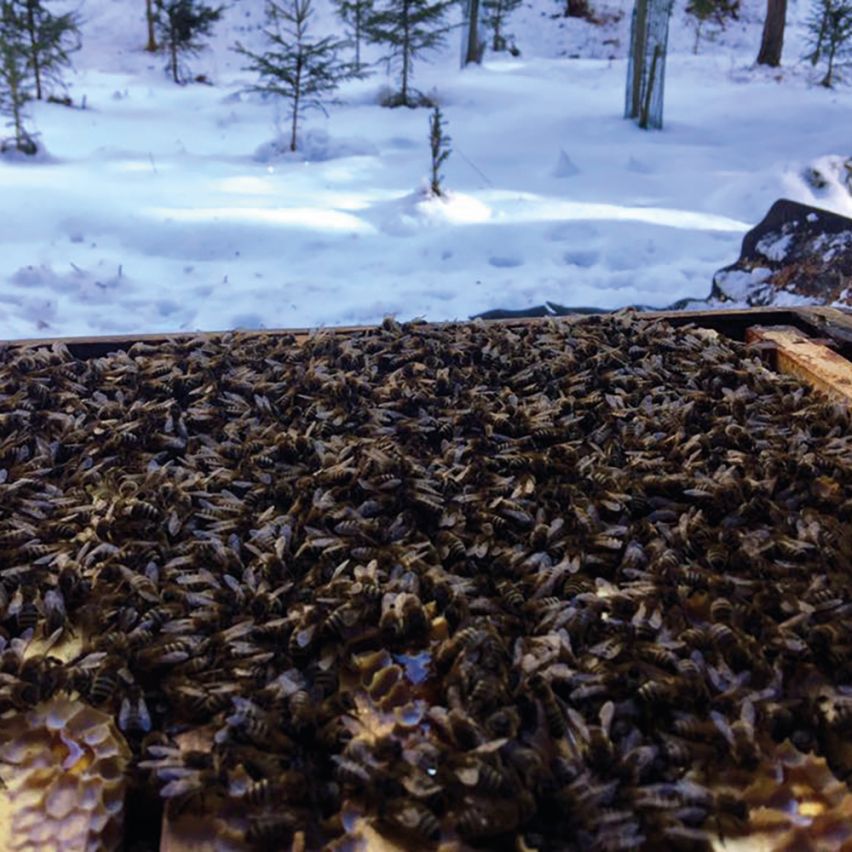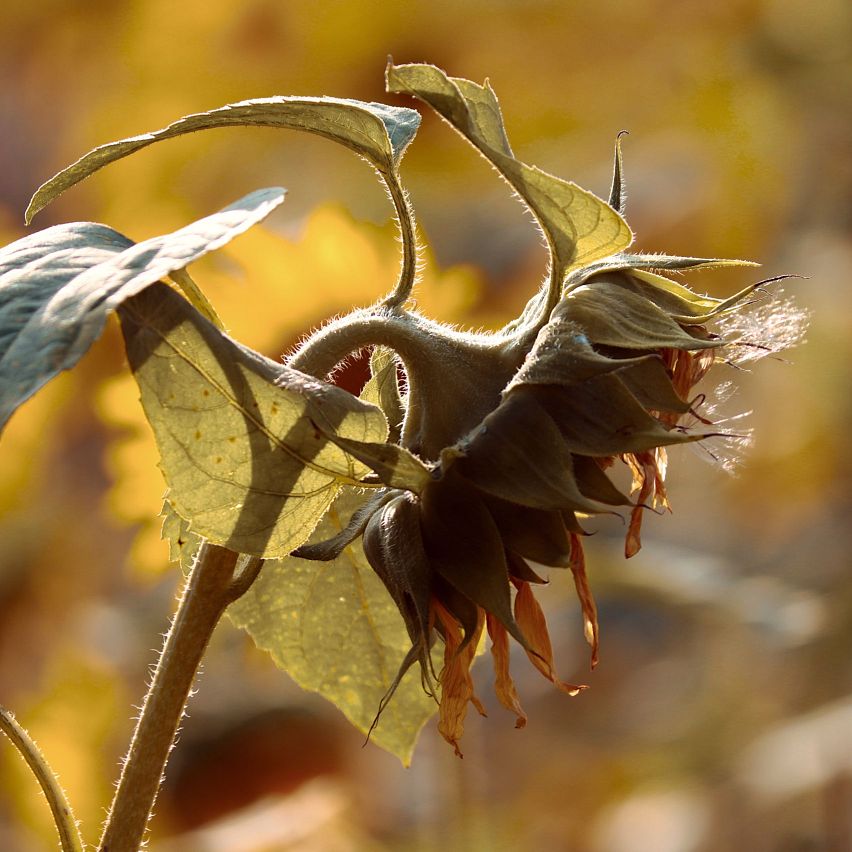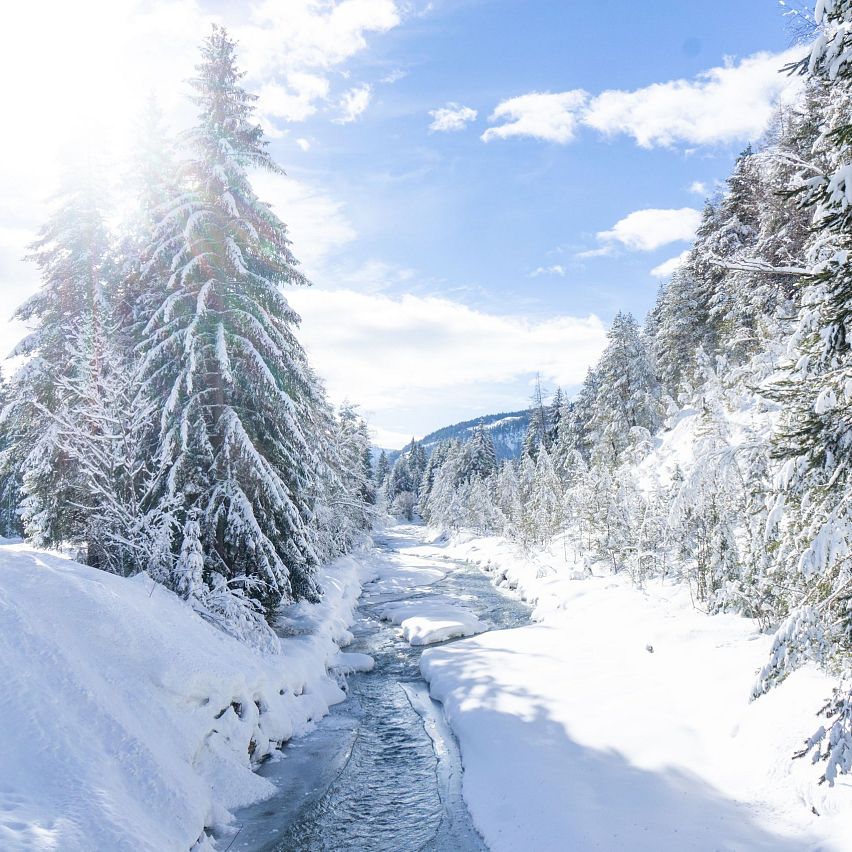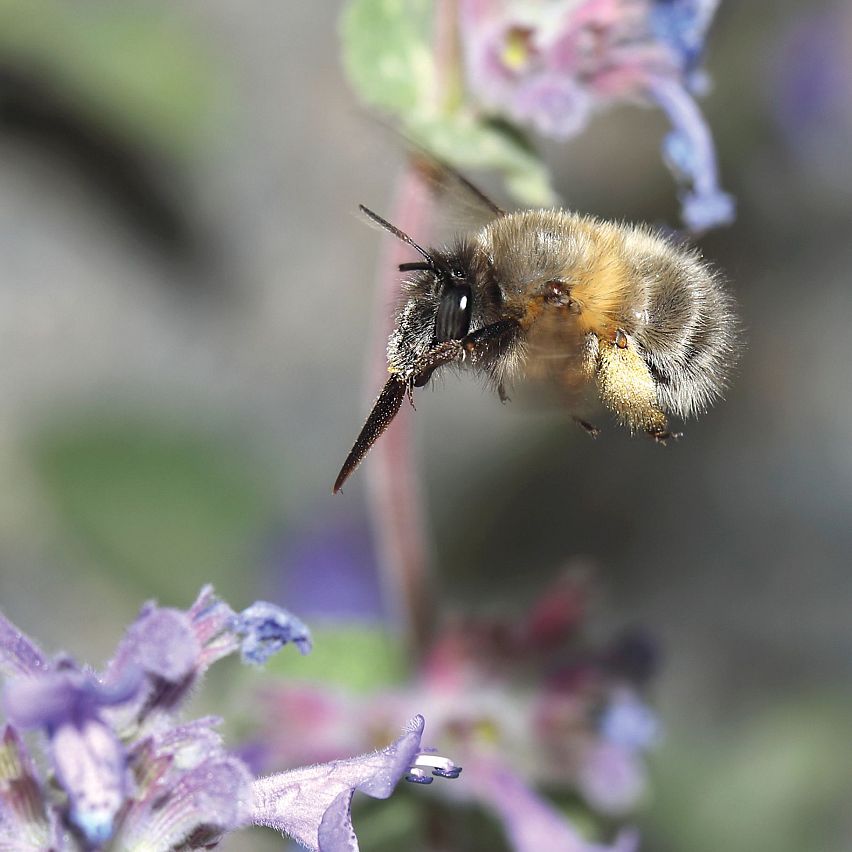Board 12 - Bee winter
From October onwards, the honey bee colony slowly returns to a state of calm. Food has been getting scarcer since August, and the hive shows a downward trend. This is because the colony no longer needs forager bees when it is cold and dark outside. The first winter bees hatch in August and live for up to six months. By comparison, a worker bee in summer only lives for around six weeks! During the long and cold winter months, the workers have one main task: to keep the nest and the queen warm. This reduces the winter bee colony to a fifth of its summer size: a colony has around 10,000 bees in winter - but in summer, it has around 50,000!
And what do the wild bees do? Only a few species overwinter as sexually mature animals, such as bumblebees (see info box). Most wild bees simply overwinter as pupae. Some spring bee species hatch in autumn but remain in the brood chamber until spring.

THE SECRET LIFE OF BEES IN WINTER
Winter cluster
When honey bees huddle close together in winter, beekeepers call this the "winter cluster". Inside it is the queen, well protected at around 25-30 °C. To prevent themselves from freezing to death, the workers rotate from the outside to the inside. Their honey stores help them survive this endeavor. Only on sunny days in February, when the outside temperature is above 12 °C, do the bees take off on their first flights to empty their fecal bladders. As soon as the temperatures rise again, they set off in search of early bloomers to raise the growing brood for the summer.

CLIMATE CHANGE AND ITS CONSEQUENCES
Too warm for bees
Due to global warming, winters are not always consistently cold. The bees are disturbed by periods of warmth and often break up the winter cluster, but find nothing when they fly out. This costs unnecessary energy and weakens the colony.
Thermal tactics: Adaptation strategies for summer and winter!
Animals, plants, and insects have developed very different tactics to adapt to heat and cold. The small spring fur bee, for example, simply grew a thick coat of fur! Now think and compare: How do you adapt to extreme temperatures in summer and winter?

Winter Hardiness Test
A challenging season for bumblebees
Wild bees hibernate alone (solitary) and, depending on the species, endure a much longer winter hiatus than honey bees. This means that their shelter must remain undisturbed over this extended period, sometimes from September to May. For bumblebees, for instance, only one in ten bumblebee queens survives the winter.

THE SPEEDSTER
Spring fur bee
– Anthophora plumipes –
- Characteristics: With a size of 15 mm, it boasts a stocky and remarkably furry body, along with a conspicuously long proboscis tailored for nectar collection in deep calyxes. It's equipped with a "leg collector."
- Habitat: Thrives in steep riverbanks, sand, gravel, and clay pits, as well as dry stone walls and gardens.
- Lifestyle: This bee lives either individually (solitary) or in colonies. Its flight pattern involves darting movements interrupted by sudden turns and brief hovering phases. Nests are typically found in loamy soils and dry crevices in walls, with nesting sites and feeding areas often up to 100 meters apart.
- Observation tip: Not selective when it comes to flowers, it particularly enjoys feeding on lungwort and larkspur. During spring, males patrol at breakneck speeds in closed circles around food plants and the nesting sites of females.
- Observation period: From March to mid-June.